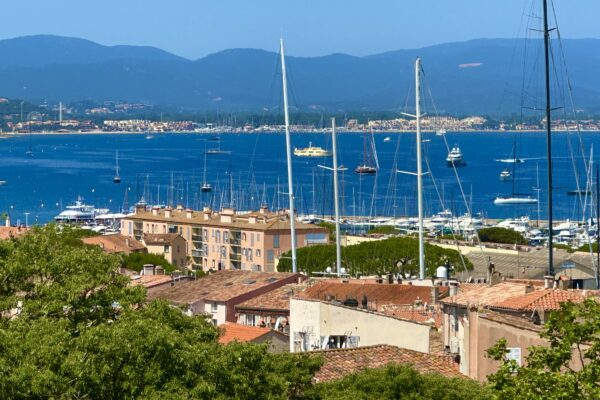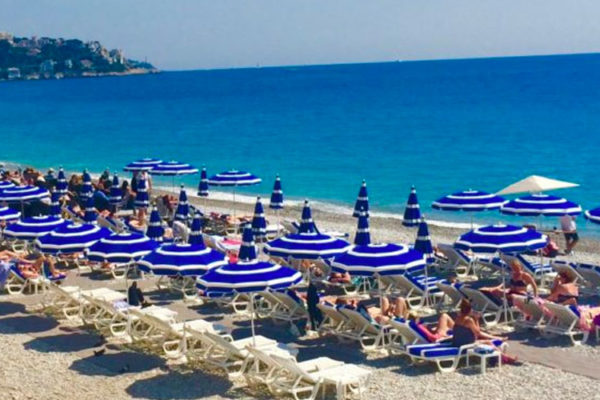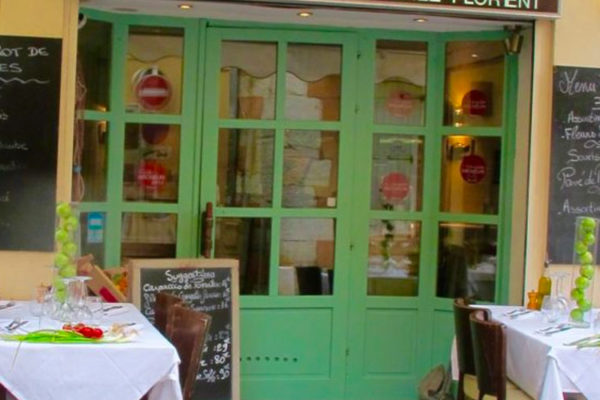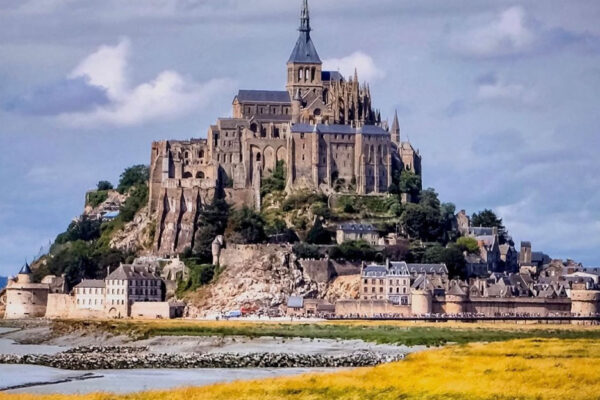An Impressionist Wander through Saint-Paul-de-Vence
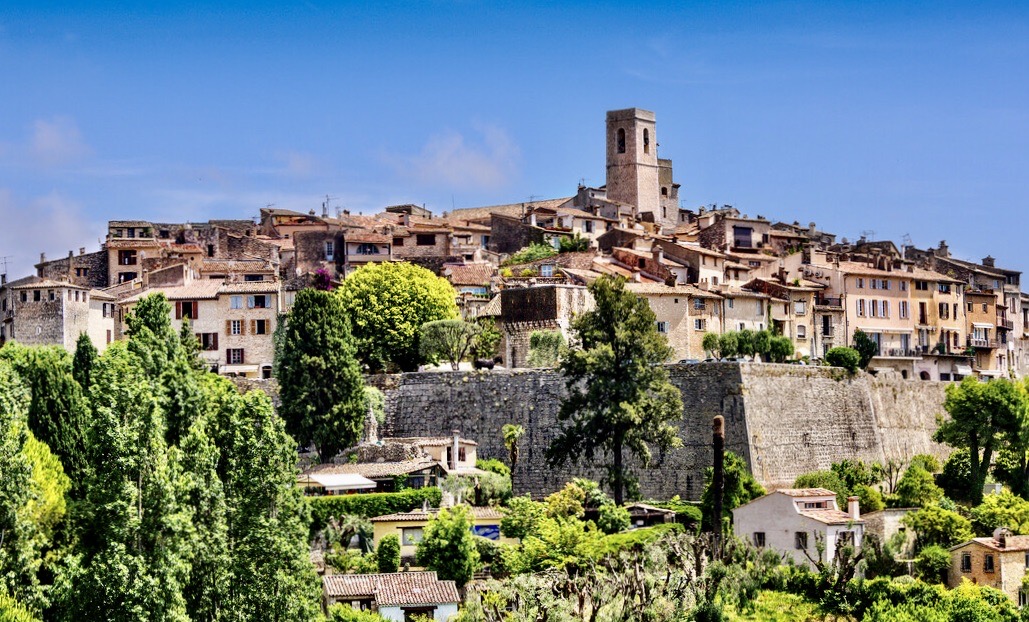
by Marla Norman
Traveling throughout France, we’ve come across one small village after another that looks as if it emerged from the pages of a storybook. Recently, we’ve learned that there’s even an organization to officially categorize which are the loveliest: Les Plus Beaux Villages de France Association.
Our current infatuation is Saint-Paul-de-Vence, located on a hilltop north of Nice, with panoramic views of the Mediterranean all the way to Cap d’ Antibes.
The oldest medieval town in southern France, Saint-Paul was first established by the Celts and Romans some 1,000 years ago. Later, in the 16th century, after repeated attacks from Charles V of Spain and his Habsburg dynasty, the Counts of Provence and French King François Ier built the city walls and fortifications that still stand today.
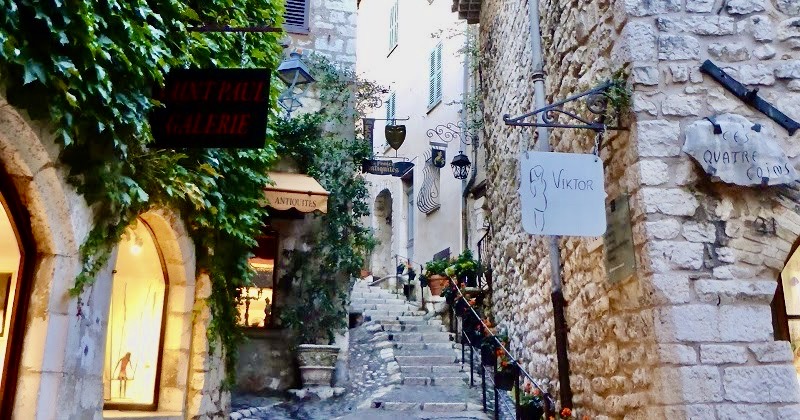
The oldest medieval town in southern France, Sain-Paul-de-Vence is filled with cobblestone streets and hidden passages. Photo by Marla Norman.
In the following centuries, the village developed its Baroque religious architecture and by the 19th century, artists charmed by the rambling cobblestone streets and vibrant Provençal colors made the village a destination. Picasso, Modigliani, Dufy, and Matisse all lived for a time in Saint-Paul de Vance.
Marc Chagall remained in the village for 19 years and is buried in the local cemetery. Murals he created at Saint-Paul’s Notre Dame de la Nativité are considered by art critics as some of his best work. The church, officially the smallest cathedral in France, is open to the public. We made a point to stop by and pay our respects to the great artist.
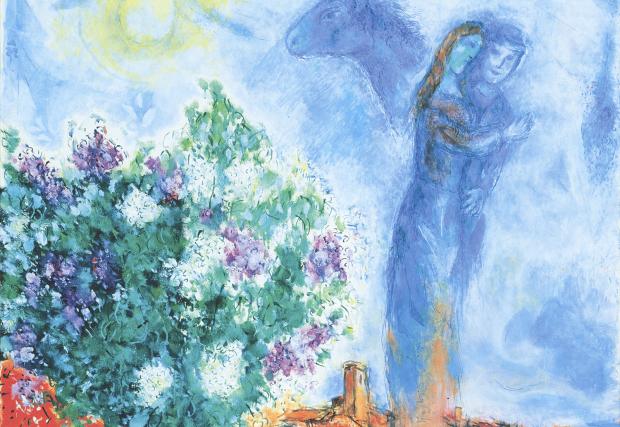
Marc Chagal mural at Saint-Paul-de-Vence
The work of many of the artists who were inspired by Saint-Paul-de-Vence is on display at the Foundation Maeght. Designed by Catalan architect Josep Lluís Sert, the Fondation boasts one of the largest collections of 20th century art in Europe.
Many of the Maeghts’ artist friends collaborated with them, creating eye-catching works that are seamlessly woven into the museum’s landscape – from Joan Miró’s sculpture and Chagall’s mosaic mural, to Alberto Giacometti’s peaceful courtyard and Georges Braque’s pool and stained glass windows.

At Hôtel La Colombe d’Or – enjoy a cocktail and works of art by Impressionist painters. Photo courtesy of Hôtel La Colombe d’Or.
Another well-loved spot for art viewing is the Colombe d’Or. The historical hotel was owned by Paul Roux, who famously offered lodging to visiting artists in exchange for paintings. Their work still adorns the hotel today. Book a stay or stop by the bar for a cocktail to enjoy the many works of art.
One of the most visible forms of art in Saint-Paul de Vence are the streets themselves. In the early 1950’s, cobblestones were brought in from the nearby beach at Cagnes sur Mer. Stone masons then set the cobbles sideways — in Provençal style — creating intricate patterns of stone flowers and sunbursts, almost too beautiful to walk on!
Ready for a break? Find a table on the shady terrace of Les Ramparts. Order a bottle of Provençal Rosé or a glass of Pastis, then sit back and take in the magnificent views of the old city walls and hillsides. When you’re ready to order, the menu offers tomato tartines, truffle Croque Monsieur, fresh fish, cheeses and desserts — all casual and delicious with the perfect setting.
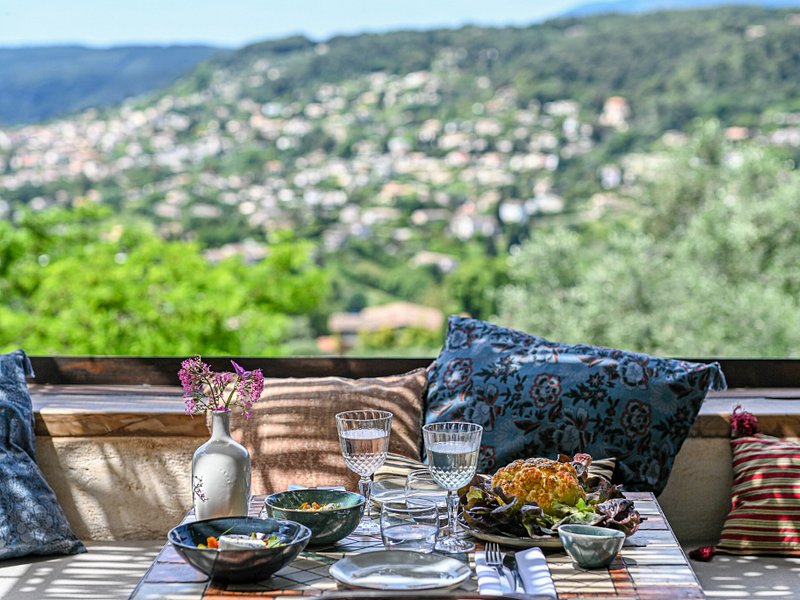
Scenic views of Saint-Paul-de-Vence from Restaurant Les Ramparts. Photo courtesy of Les Ramparts.
After lunch, continue wandering the cobblestone streets to enjoy the chic galleries and shops. If you catch a scent of something extraordinary, it undoubtedly will be the fragrances emanating from Maison Godet. Here too, you’ll find a significant connection to Impressionist artists.
Born into a family of Cognac distillers, Julien-Joseph Godet was already an expert in distillation and maceration when he decided to branch out and apply those same skills to create perfumes. As his reputation grew, he met the painter Pierre Bonnard who commissioned a fragrance. The result was Fleurs de Reine (Queen’s Flowers) made from tuberose, jasmine and cedarwood and still available at the shop today.
One Impressionist artist led to another. In 1925, Henri Matisse visited Godet’s shop, accompanied by his “muse” Henriette Darricarrère. The young woman was immediately drawn to a blend of violets, oakwood and cardamon. Called Folie Bleue (Blue Madness) this perfume is also still available at Maison Godet.
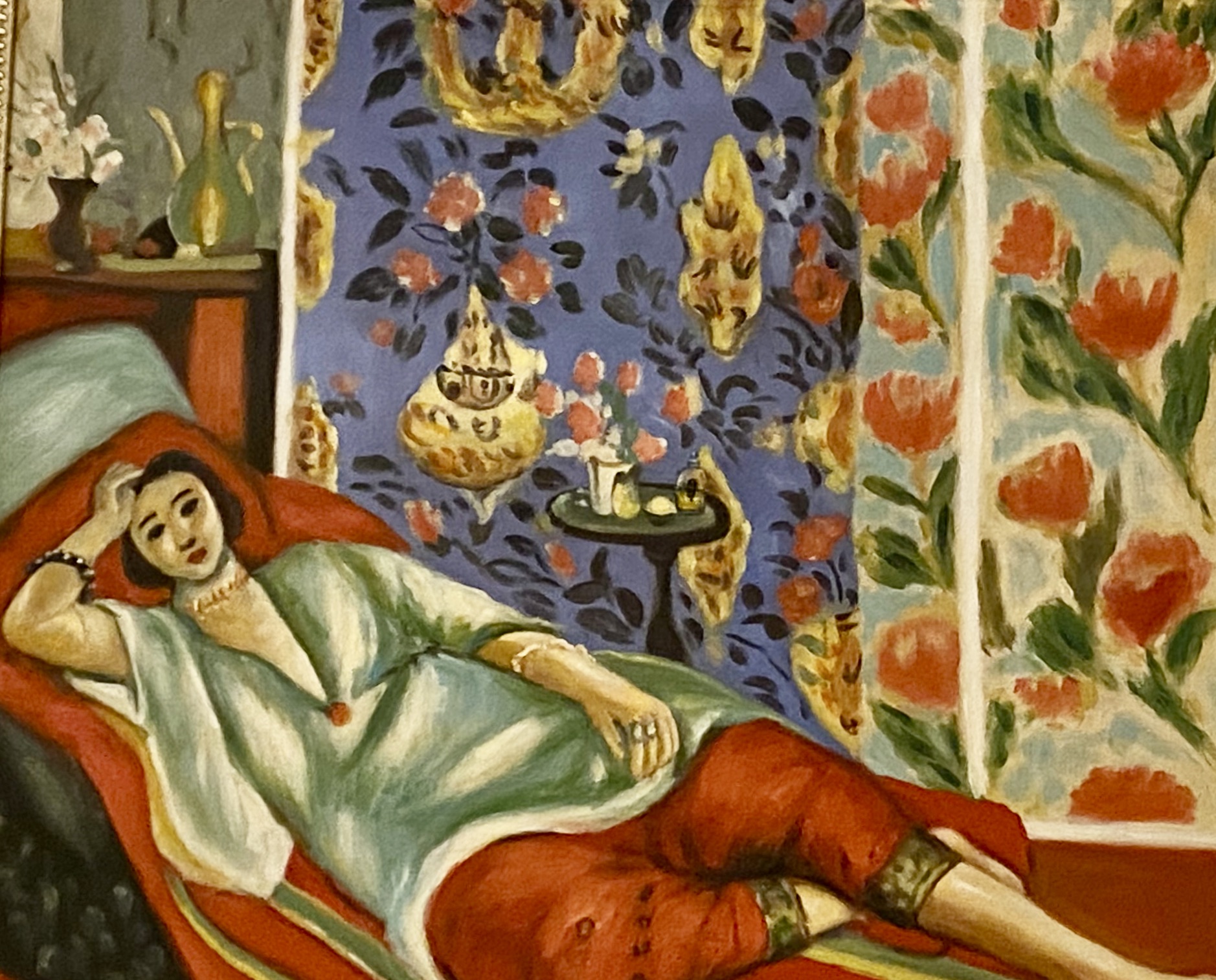
A copy of the Matisse painting “Odalisque in Red Trousers” featuring Henriette Darricarrère hangs in Maison Godet.
Sonia Godet, a trained “Nose” is at the helm of the company currently. She has clearly inherited her Great Grandfather’s gift and has designed a number of signature fragrances for celebrities and luxury hotels. But her most recent creation is much more personal — Éclosion d’Amour (Love Burst) in honor of her first child.
Vivacious and dynamic, Sonia welcomed us with a glass of her family Cognac, which we enjoyed while sampling perfumes – truly an intoxicating combination! In addition to the actual creation of perfumes, Sonia has a gift for matching her clients’ personalities with a fragrance. For us, she chose Joie de Vie, blended from verbena, jasmine and nerole and Rendez-vous de Cap Ferret, with juniper berries, myrtle and thyme.
We left Maison Godet feeling as if we were floating in a separate world…and carrying a bit of Saint-Paul-de-Vence away with us.
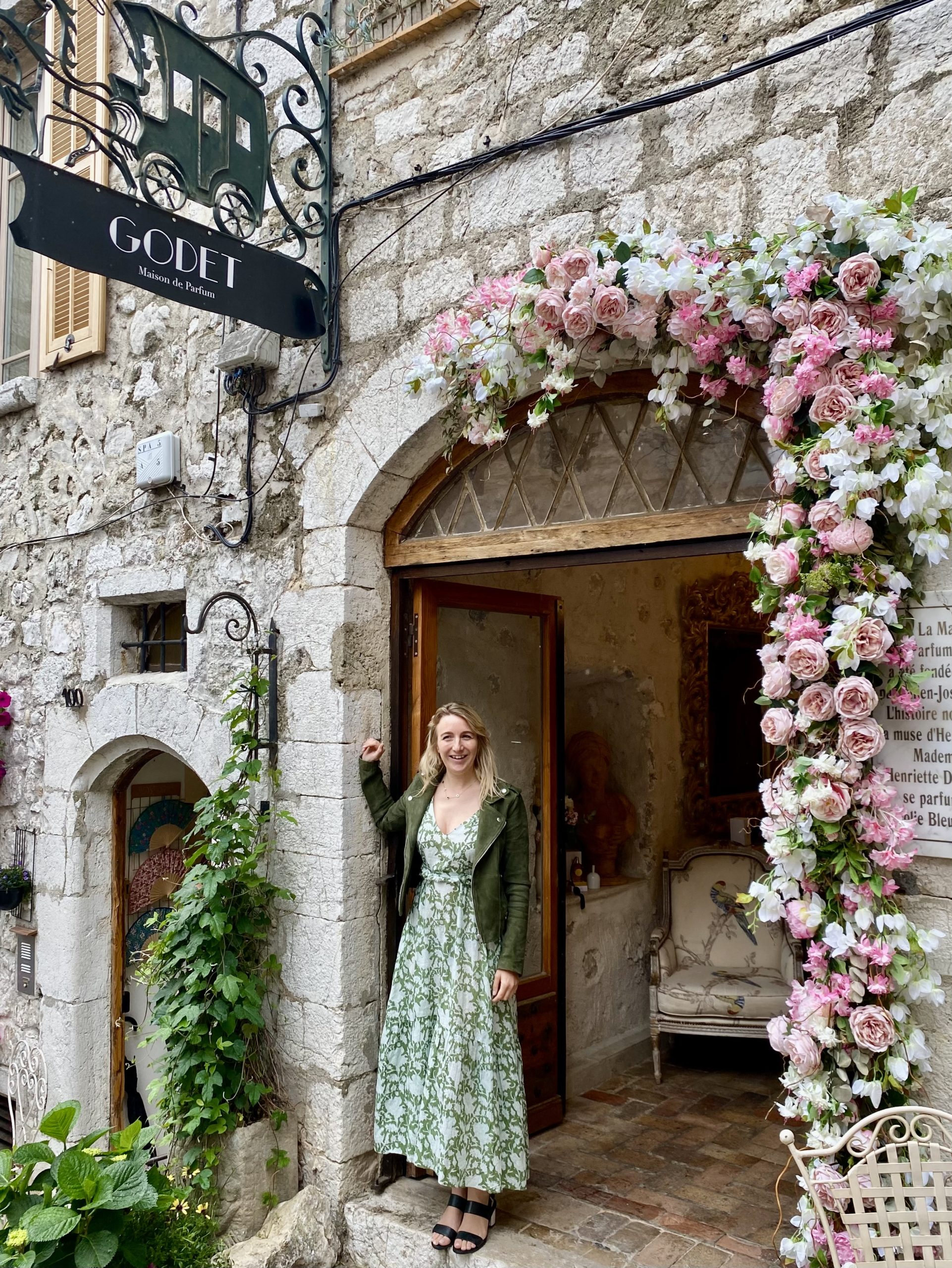
Sonia Godet – the owner and “Nose” at Maison Godet Parfumes. Photo by Marla Norman.




